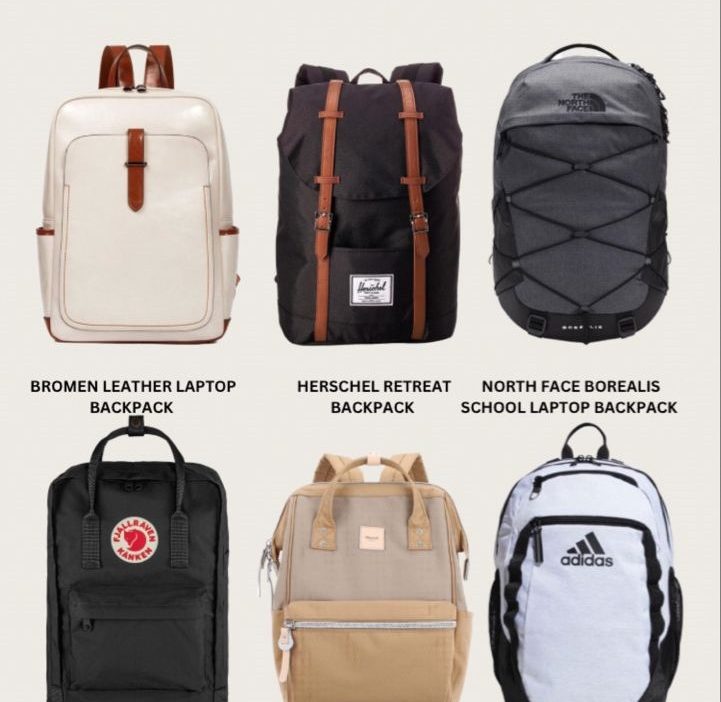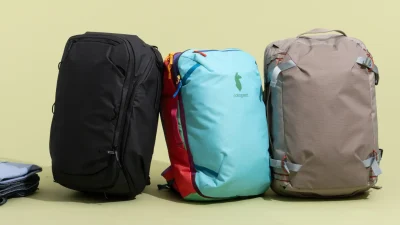Size and Capacity
When selecting a backpack, size is one of the most critical factors. The right capacity depends on the nature of your travels. A day trip might only require a smaller pack, usually between 20 to 30 liters, while longer trips often necessitate a larger one, around 40 to 60 liters. If you’re traveling for extended periods, consider backpacks that can expand or come with detachable compartments to accommodate additional gear.
The sizing also matters in terms of comfort. Look for a backpack that fits well—not too loose and not too tight. Manufacturers often list their backpacks by torso size, so it’s advisable to measure your torso length and select a backpack that’s meant for that specific range. An ill-fitting backpack can lead to discomfort and back pain, detracting from the overall travel experience.
Comfort and Support
Comfort should be a priority when choosing a travel backpack. Look for padded shoulder straps and a cushioned back panel. This helps distribute weight effectively across your back, reducing strain during long stints of carrying your pack. Many backpacks come with adjustable straps that let you customize the fit to your body, enhancing your comfort during prolonged use.
If you expect to carry your backpack for hours, consider options with a hip belt. These belts provide additional support and help transfer some of the load away from your shoulders. A good hip belt allows for more mobility and is essential for maintaining comfort while navigating busy train stations or hiking rugged trails.
Durability and Material
The materials used to make a backpack can significantly influence its lifespan. Look for durable fabrics like nylon or polyester that are water-resistant. These materials are less likely to wear down over time and offer excellent protection against the elements. Additional features such as reinforced seams and heavy-duty zippers are also indicators of durability.
Check for appropriate waterproofing if you travel to wet regions or engage in outdoor activities. Even a water-resistant backpack may not hold up under heavy rain. Some backpacks come with a rain cover or have a fully waterproof build, giving you added peace of mind during unexpected weather.
Organization and Compartments
A well-organized travel backpack can save you a lot of hassle. Look for multiple compartments and pockets that allow for neat organization of your items. Some backpacks have special sections for electronics, clothing, and toiletries, making daily access easier. You might also find side pockets useful for keeping water bottles or smaller items within reach.
Consider backpacks with a main compartment that opens fully, like a suitcase. This design allows easy packing and unpacking, especially during airport security checks. Also, some backpacks come with separate compartments for shoes or dirty laundry, which helps maintain cleanliness throughout your journey.
Accessibility Features
Accessibility in a backpack can vary significantly between models. Look for bags with front-loading zippers, which allow for easier access to items located at the bottom of the bag. Some backpacks even have a side opening, enabling quick access while keeping the bag on your back.
Laptop compartments are another vital feature for modern travelers. If you plan on traveling with a laptop or tablet, make sure there’s a dedicated, padded compartment to keep your devices safe. This feature not only protects fragile electronics but also makes going through airport security more efficient.
Weight
While you want your travel backpack to be durable and spacious, keeping an eye on weight is equally important. The weight of the backpack itself can add up, especially if you’re planning to pack many items. A lightweight design can make a significant difference, allowing you to bring more essentials without exceeding weight limits.
Some backpacks are made from advanced materials, providing durability while remaining surprisingly light. Check the specifications to find a balance between robustness and weight, ensuring you won’t feel overwhelmed by your luggage.
Versatility
The best travel backpacks have versatility in design and function. Depending on your travel style, you might want a backpack that can double as a daypack or be suitable for both urban and outdoor adventures. Look for bags that allow you to attach additional gear, such as camera kits or extra pockets, which can help develop a multi-purpose backpack.
Travelers often encounter various environments, from bustling city streets to serene mountains. A versatile backpack should fit in seamlessly in different settings while offering comfort, organization, and protection against the elements. This feature allows you to adapt to any situation quickly, ensuring a smoother journey.
Style and Design
Your travel backpack should reflect your personality and style, as it often accompanies you everywhere. Aesthetics are essential, especially if you’ll be exploring urban environments or partaking in social events. Modern design options range from sporty to sleek, giving you plenty of choices.
However, it’s important to balance style with functionality. Look for backpacks that offer attractive designs along with essential features like organization, comforts, and durability. Ultimately, you want a pack that suits your taste while being practical for your travel needs.
Brand Reputation and Reviews
When investing in a travel backpack, it’s beneficial to consider reputable brands known for their quality and customer service. Researching brands’ histories, practices, and materials can help you make an informed decision. Additionally, customer reviews often provide insights into other travelers’ experiences with specific models, highlighting strengths and weaknesses.
If possible, visit stores that carry these backpacks to get a sense of the feel and fit. Trying it on can make a significant difference in understanding if it matches your requirements. Ask store associates for insights into the features and performance of different backpacks, but also rely on online reviews for broader perspectives.
Price and Budget
Finally, consider your budget when choosing a travel backpack. Keeping an eye on features without overspending is crucial. While high-quality backpacks often come at a premium price, it’s worth investing in a durable model that will last many trips. Look for sales or discounts, especially during peak travel seasons when retailers tend to offer promotions.
Consider the long-term value of your investment. Sometimes spending more upfront prevents you from needing to replace cheaper models frequently. Keep in mind factors like warranty or repair options that can save you money in the long run.
Conclusion
Finding the perfect travel backpack can significantly enhance your travel experience. By looking at features like size, comfort, durability, organization, and style, you can discover a bag that meets all your needs. Don’t forget about versatility and brand reputation; they also play a crucial role in your decision. Investing in a quality backpack not only keeps your belongings safe but also ensures your comfort during your adventures. Ultimately, the right travel backpack allows you to focus on what matters most—embracing the exploration and joy of traveling.
FAQ
What is the best size for a travel backpack?
The best size largely depends on the duration of your trip. Generally, a backpack between 40 to 60 liters is ideal for longer journeys, while 20 to 30 liters is suitable for day trips.
Is a hip belt necessary for a travel backpack?
A hip belt is helpful for transferring weight from your shoulders to your hips, enhancing comfort, particularly during long walks. It is recommended for heavier loads but not strictly necessary for lighter packers.
How do I clean my travel backpack?
Most travel backpacks can be spot cleaned with mild soap and water. Always refer to the manufacturer’s care instructions for specific cleaning guidelines to avoid damaging the backpack.
Can I use a hiking backpack for travel?
Yes, many hiking backpacks are versatile enough for travel, especially if they have features like multiple compartments and easy accessibility. However, ensure it meets airline carry-on regulations if flying.
How do I ensure my backpack is travel-ready?
Before your trip, check the zippers, straps, and compartments for functionality. Pack it wisely, balancing weight and accessing frequently used items easily


